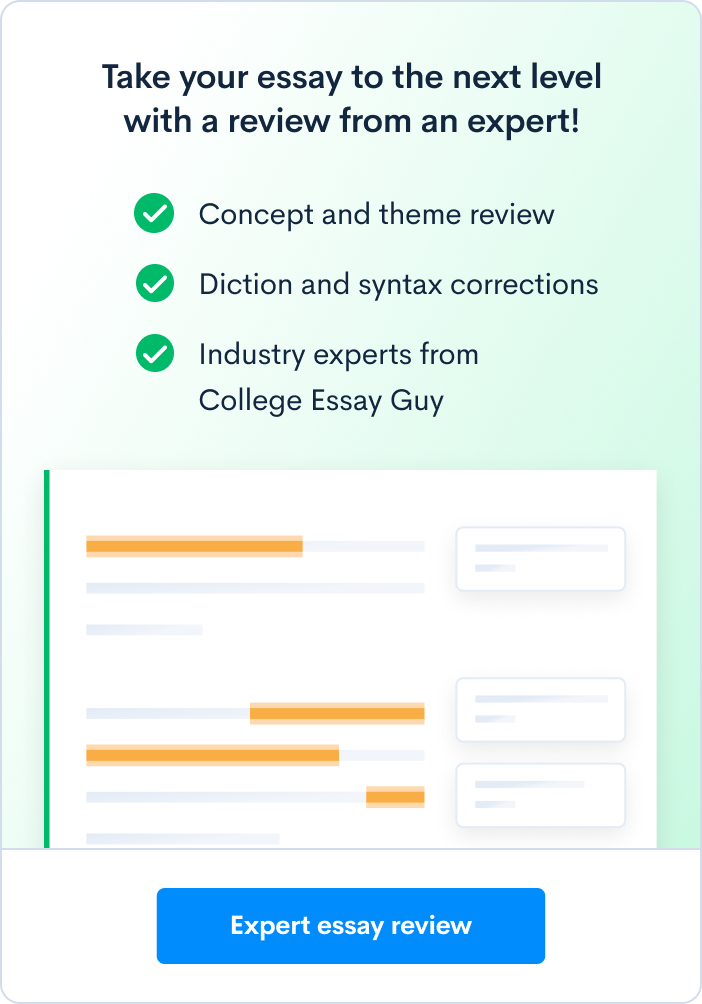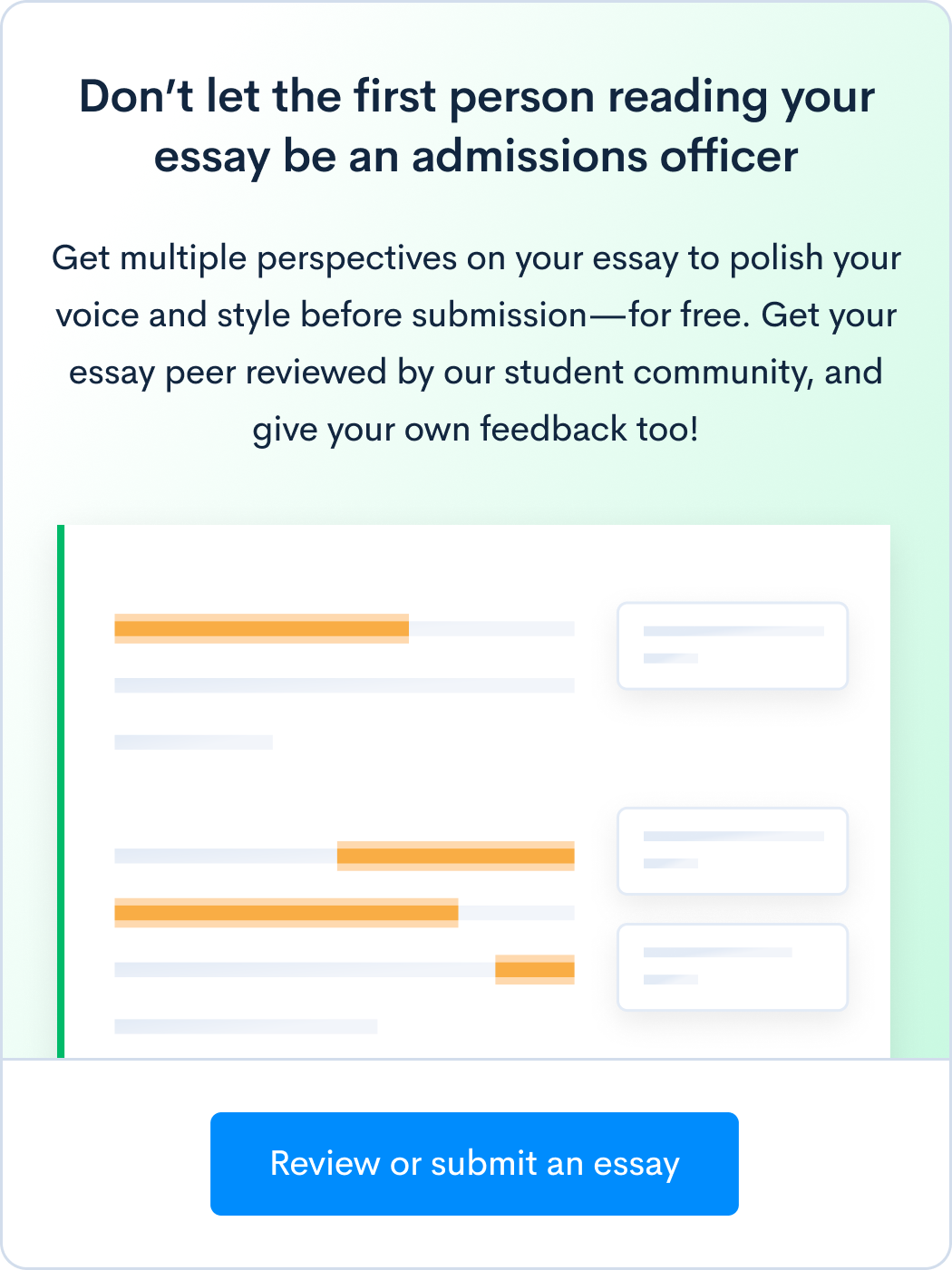Creating the First Draft of Your College Application Essay
By the time senior year rolls around, you have already done most of what it takes to get into college. Years of grades, extracurricular activities, and test scores have already stacked up to give admissions officers a sense of your interests and talents. So then why should essays be a big deal, if all of this information about you already exists?
Essays are extremely important because they tie the whole application together. You aren’t just a list of accomplishments—you’re a person. Your essay is one of the few places in the application where you get to show your values and personality to the selection committee. And that takes a lot of careful planning. In this post, we’ll talk about how to write the first draft of a winning college application essay.
How Long Should the College Essay Drafting Process Take?
We recommend giving yourself at least a month to craft your personal statement. For most students, this is the main essay on the Common Application. To get advice on those specific prompts, see CollegeVine’s post on How to Write the Common Application Essays 2018-19 (With Examples). Students using a different application portal can still follow these general drafting guidelines.
For school-specific essays, we recommend starting at least two weeks before the deadline. The drafting process requires a little less soul-searching and a bit more research. If you’re at the point where you’re writing “Why This School” essays, you can find drafting tips at CollegeVine’s Why This College’ Essays: Should You Focus on Yourself or the College?
We have students start essays early so that they have time to marinate. You will come up with great ideas between drafts, and words that sounded great at first will stick out if you read the essay several days or weeks later.
These timeline suggestions are on the low end. Starting even earlier never hurt a student.
I’m Smart. Can’t I Just Start the Essay the Night Before It’s Due?
Sure, it’s your essay. However, it’s our professional opinion that students who put this off are leaving tens of thousands of dollars on the table.
How can that be? A lot of undergraduate scholarships are based on your college application only. These are “automatic consideration merit awards.” So even if you gain acceptance using a last-minute essay (which is not a guarantee), you could be missing out on serious financial aid.
In the rest of this article, we recommend one approach to building a first draft. This is not necessarily how you have to start. If you use this method, then you can be sure no important step is falling through the cracks.
CollegeVine’s 5 Steps to a First Draft
1. Analyze the Prompt
First, read the prompt. In some cases, you have only one choice. In others, you will be given multiple questions from which to choose. If you have options, read them all before narrowing in on one prompt over another.
Once you have identified a prompt that speaks to you, annotate it. First, underline key words or phrases. Here you can see an example annotated prompt from this year’s Common Application prompt choices.
The lessons we take from obstacles we encounter can be fundamental to later success. Recount a time when you faced a challenge, setback, or failure. How did it affect you, and what did you learn from the experience?
By underlining the key parts of the passage, you get a sense of what kinds of answers go well with this essay prompt. For instance, students who annotated this prompt would know that they should be looking for obstacles, challenges, setbacks, or failures in their past.
Next, number the specific requests that the prompt makes. This avoids the common mistake of responding to some but not all of the questions posed. You can see how we break down the same example prompt below:
The lessons we take from obstacles we encounter can be fundamental to later success. (1) Recount a time when you faced a challenge, setback, or failure. (2) How did it affect you, and (3) what did you learn from the experience?
Student who annotated this prompt would know that the essay should accomplish three things:
- Let the reader know when they faced a challenge, setback, or failure.
- Describe how it affected them.
- Share what they learned from the experience.
This whole process only takes a few minutes, but it will help you stay on-topic when it actually comes time to write.
2. Free Write
Next, write without stopping for 30-60 minutes. This gets your creative juices flowing and helps you to uncover ideas you would not have considered otherwise. There are only two rules for a free write:
First, stay on topic.
Second, don’t stop writing!
3. Analyze Your Free Write
As soon as you’re done, read your free write over again. There will probably be something that surprises you. Put a star next to it. If you find a part that really resonates with you, star that as well. Eye-catching details and stories that grab your attention usually make for good essay material.
Next, look for a “growth” moment in the free write. Most successful essays follow this story arch:
-
- At first I was [A: trait].
- Then something important happened: [B: event].
- Because of [B: event], I am no longer [A: trait]. Now, I am [C: trait].
If you can fill in [A], [B], and [C] with your own story of how you grew, then you probably have a good essay topic on your hands. Whenever you find one of these growth moments, star it.
4. Pen Your First Draft
By now, you should have an annotated prompt and a free write with a bunch of stars on it. Does anything jump out at you? Is there one essay idea that is more appealing than the others? If no, try the same process with a different prompt. If yes, then it’s time to write your first draft.
This draft doesn’t have to be pretty. All you have to do is tell a story that answers the questions you numbered in the prompt. Whenever possible, try to answer these questions with stories from your life. Give examples. Be specific.
5. Review Your First Draft
Once you’ve written your draft, read it over. All you have to do is answer one question: Are you the hero of your story?
Some essays show the author as the hero, but just as often a friend or family member actually winds up becoming the main focus of a student’s essay. At the end of the day, you need to be the main character. Otherwise, colleges and universities will not have enough information about you to make an informed admissions decision.
Read this draft a second time. This time, answer this question: Did you respond to all parts of the prompt?
Make sure you answer each question presented. For the example, this looks like:
(1) Recount a time when you faced a challenge, setback, or failure.
(2) How did it affect you?
(3) What did you learn from the experience?
If your essay addresses every question in the prompt, then you just completed a great first draft essay.
I’m Done with My First Draft. What Should I Do Next?
Congratulations! You have now officially completed a first draft of your essay. Rest assured that you are on your way to an application that lets your values and personality shine.
After getting to this point, set the essay aside for a few days or weeks. We recommend reading this over at least two more times before you declare that it is finished. Each time you read, you will likely catch something that needs improving.
Your next step will be to edit and proofread. For tips on how to perfect your essay, see our post of 11 Tips for Proofreading and Editing Your College Essay. Good luck!
You can find additional help by reading these related articles:
- How to Craft the Perfect College Application Essay
- Find Your College’s Application Essay Prompts for 2018-19
- Essay Prompt Breakdowns
- What Is a Personal Statement?
- College Essay Structures & How to Approach Them
- ‘Why This College’ Essays: Should You Focus on Yourself or the College?
Want help with your college essays to improve your admissions chances? Sign up for your free CollegeVine account and get access to our essay guides and courses. You can also get your essay peer-reviewed and improve your own writing skills by reviewing other students’ essays.







